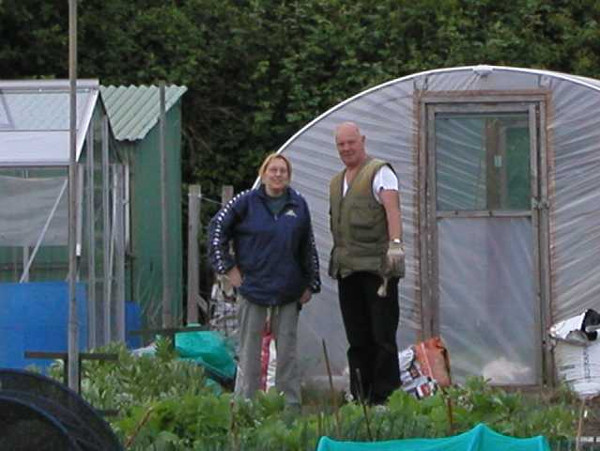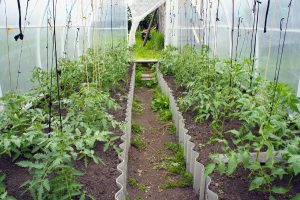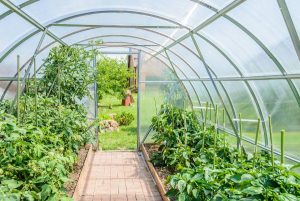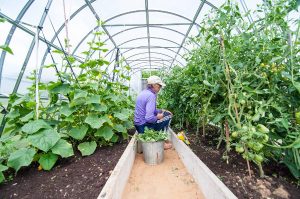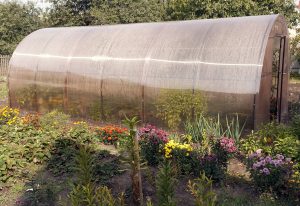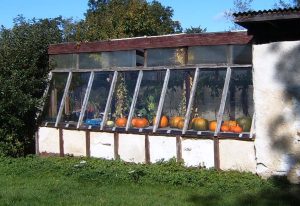You will really feel the warmth in your greenhouse or polytunnel now and so do your plants. They start to grow quite rapidly now but be aware that the nights are still quite cold and there is still a high risk of frost. Many garden centres will try and sell you tomato plants from the end of March onwards. Don’t let them tempt you until May.
Sowing in the polytunnel
Direct sowing into beds
In March you can still sow the following vegetables directly into the soil. However, if you sow carrots, beetroot and peas now they will only be ready in mid June which is far too late to plant your tomatoes or peppers.
- Beetroot (Pablo F1)
- Carrots (Ya Ya F1, Amsterdam Forcing)
- French beans (dwarf and climbing types)
- Peas, Mangetout (Sweet Horizon)
- Radish (Short Top Forcing) – small amounts at regular intervals
- Turnips (Milan Purple Top) – small amounts at regular intervals
Planting into beds
You can now plant out the seedlings you raised earlier on your heating bench: lettuce, scallions, dill, coriander, chervil, early cabbage, calabrese, mini cauliflowers, early leeks, perpetual spinach, Swiss chard, salad rocket and all other oriental salads. Most seedlings take about 4-5 weeks from sowing until they are ready to plant.
Sowing into modules/pots (18-20˚C)
Do not let your heating bench clutter up too much. Most vegetables only require some warmth for germination and in March the seedlings are better off if placed on a non-heated bench in the tunnel or greenhouse. Only your tomatoes, peppers, chillies, aubergines, courgettes, cucumbers, squash, pumpkins, celery, celeriac and basil should remain on the heating bench until they are planted in May. Really all other vegetables should be moved off the heating bench about a week after they have germinated.
In March you can sow the following vegetables into modular trays and place them in your propagator or warm, south-facing windowsill in the house:
- Aubergine (Black Prince F1) – 5 seeds per 7cm pot, for pricking out
- Basil (Sweet Genovese) – 4 seeds per cell (only late in the month)
- Calabrese (Green Magic F1) – 1 seed per cell
- Cauliflower (for mini cauliflowers) – 1 seed per cell
- Celery (Victoria F1) – broadcast in a tray for pricking out later
- Chilli peppers (various varieties) – 5 seeds per 7cm pot – only early in the month
- Courgette (Parthenon) – 1 seed per 7cm pot
- Coriander, Dill and Chervil – 5 seeds per cell
- French beans (climbing and dwarf) – 5 seeds per 9cm pot
- Kohlrabi (Azur Star) – 1 seed per cell
- Lettuce (various types) – 1 to 3 seeds per cell
- Oriental salads (mizuna, rocket, tatsoi, etc.) – 5 seeds per cell
- Pepper (Roberta F1, Bell Boy F1) – 5 seeds per 7cm pot, for pricking out
- Scallions (Parade or Ishikura) – 5 to 10 seeds per cell, depending on how many you like in a bunch
- Tomato (Sungold F1 & others) – 5 seeds per 7cm pot, for pricking out.
Do not sow your cucumbers and melons yet. You’ll get much better results if you wait until April to sow them.
For planting outside
You can also raise the following vegetables indoors for planting out into your vegetable garden later.
- Cabbage (early varieties) – 1 seed per cell
- Calabrese (Green Magic F1) – 1 seed per cell
- Celery (Victoria F1) – broadcast in a tray for pricking out later
- Celeriac (Giant Prague) – broadcast in a tray for pricking out later
- Kohlrabi (Azur Star) – 1 seed per cell
- Leeks (Hannibal) – 2 seeds per cell
- Lettuce (various) – 1 to 3 cells per cell
- Onions (Golden Bear F1) – 4 seeds per cell
- Scallions (Ishikura Bunching) – 10 seeds per cell
Harvesting from the polytunnel
Salad rocket, wild rocket, various mustard leaves (Green Wave, Green in the snow, Red Frills, Green Frills), tatsoi, pak choi, corn salad, winter purslane, cress, mizuna, mibuna, komatsuna, texel greens, baby spinach, beet leaves (Bulls Blood) and possibly even some lettuce leaves.
You can still harvest the overwintered Swiss chard and perpetual spinach and towards the end of the month you should get your first radishes and baby turnips.
General greenhouse/polytunnel jobs
- Water more frequently now, about twice a week. Do not saturate beds though.
- Ventilate as much as possible, but still close the doors and windows at night.
- Prick out aubergine, pepper and tomato seedlings into individual 7cm pots using good potting compost.
- Cover up the emerging potato shoots with fleece or cover completely with soil if frost is forecast.
- Continue with digging in well-rotted manure or compost into empty beds. Remember each bed needs to be fed every year.
- Keep a watch out for pests, especially aphids on a variety of crops and leatherjackets and cutworms on newly planted lettuce.
- Prick out celery seedlings into cell trays – one seedling per cell.
- Earth up potatoes and still watch out for frost. If frost is forecast you can either completely cover the potato stems with soil or compost or alternatively cover them with a double layer of fleece.
You can get John’s book Vegetable Growing Month-by-Month here.

